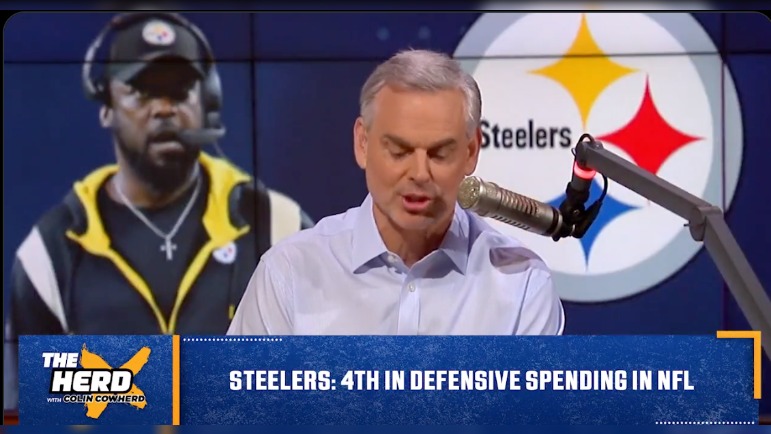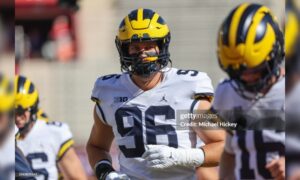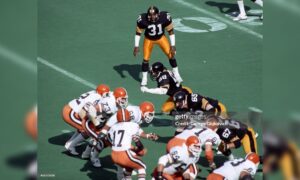Radio TV show host Colin Cowherd hosted his show The Herd Thursday and spent a segment of the show talking about the contract extension they recently signed Alex Highsmith to this week, locking him into Pittsburgh through the 2027 season.
After mentioning Highsmith’s extension, Cowherd went on to compare Pittsburgh’s team-building philosophy to the Kansas City Chiefs, calling their “world view” archaic in nature compared to the reigning Super Bowl champions who are doing their best to stay “current” in today’s NFL.
“The Chiefs are third in offensive spending near the bottom of the NFL on defense, the Steelers are third or fourth highest spenders on defense,” Cowherd said. “Both rosters are very good. Both coaches are very good, both rosters, organization ownership… excellent, but the Chiefs are viewed differently today. They’re viewed as creative and progressive and cutting edge and clever. Move off players quickly, especially on the defensive side if they’re not named Chris Jones. Pittsburgh today is viewed as tough physical defense and for five years they can’t figure out their offensive line or running game.”
The Kansas City Chiefs currently have the highest-paid QB in the league in terms of total value with Patrick Mahomes inked to a ten-year deal worth $450 million. They also have one of the highest-paid TEs in the league in Travis Kelce who is currently in the middle of a four-year pact worth $57.25 million. Throw in the fact that they have significant money invested in FA aquations OG Joe Thuney, Marquez-Valdes-Scantling, and OT Jawaan Taylor, it makes sense why they are one of the top-paid offenses in the league. By comparison, only DL Chris Jones and S Justin Reid are the only defensive players making above $10 million annually.
“Kansas City’s view: spend the money on offense,” Cowherd said. “Keep the defense young, fast, cheap, and fresh. If they get hurt, they recover more quickly. The Steelers’ worldview: more sacks. The Steelers have led the NFL in sacks in four of the last six years. Zero playoff wins.”
Pittsburgh has invested plenty of money in their defense, but it hasn’t been for a lack of attempting to build up their offense. The Steelers have gone to the draft to acquire and develop their top skill positions including QB Kenny Pickett, RB Najee Harris, WR George Pickens, TE Pat Freiermuth, and most recently OT Broderick Jones. Harris has the highest cap hit of those mentioned this season at $3.558 million according to OverTheCap, meaning that Pittsburgh doesn’t have to invest as much on the offensive side of the football with plenty of their top offensive players on rookie deals.
The Steelers have shown they are willing to commit big money on offense, inking WR Diontae Johnson to a two-year extension for good money as well as going out to acquire OGs James Daniels and Isaac Seumalo in free agency without breaking the bank KC did for Thuney. This strategy allows Pittsburgh to use a lot of their cap space to beef up the defense, giving big deals to OLBs T.J. Watt and Alex Highsmith, DL Cameron Heyward and Larry Ogunjobi, and S Minkah Fitzpatrick while their QB is on a rookie deal.
Cowherd calling the Steelers “not current” with the Chiefs and the rest of the league is frankly, a lazy process. At one time, Mahomes was on a rookie deal which allowed KC to have the likes of S Tyrann Mathieu and EDGE Frank Clark on the roster who commanded big money. However, once Mahomes signed his mega-deal, the Chiefs had to part with their high-paid defensive veterans and go the rookie route, attempting to develop them the same way that Pittsburgh is currently developing their offense.
At some point, Mahomes will be in his 30s and Kelce will have retired as the Chiefs start to age on the offensive side of the football. When that happens, Pittsburgh’s offense could be hitting its stride should Pickett prove to be the guy and ink a lucrative contract extension himself, challenging Cowherd’s take as the Steelers shift to the “current view” of money allocation in the NFL.








